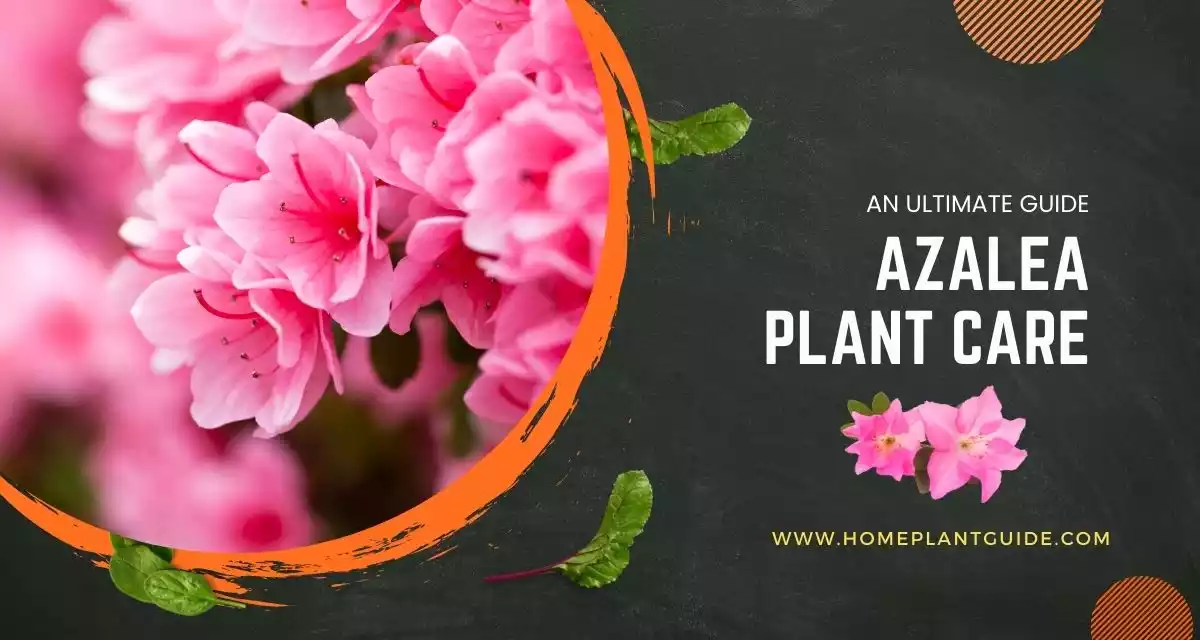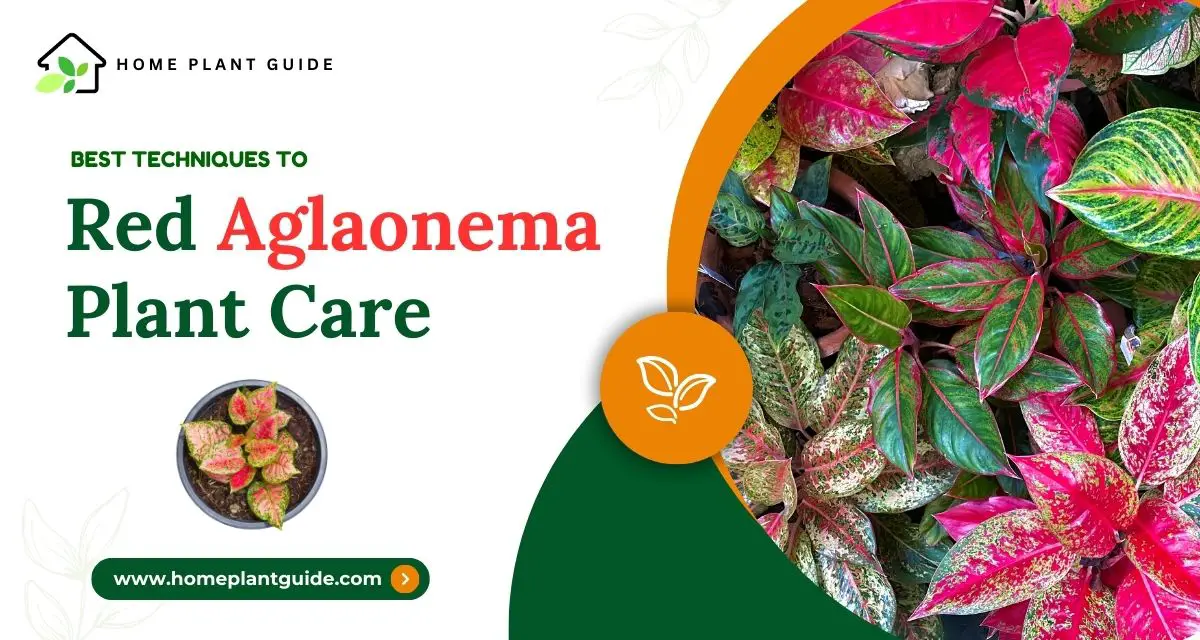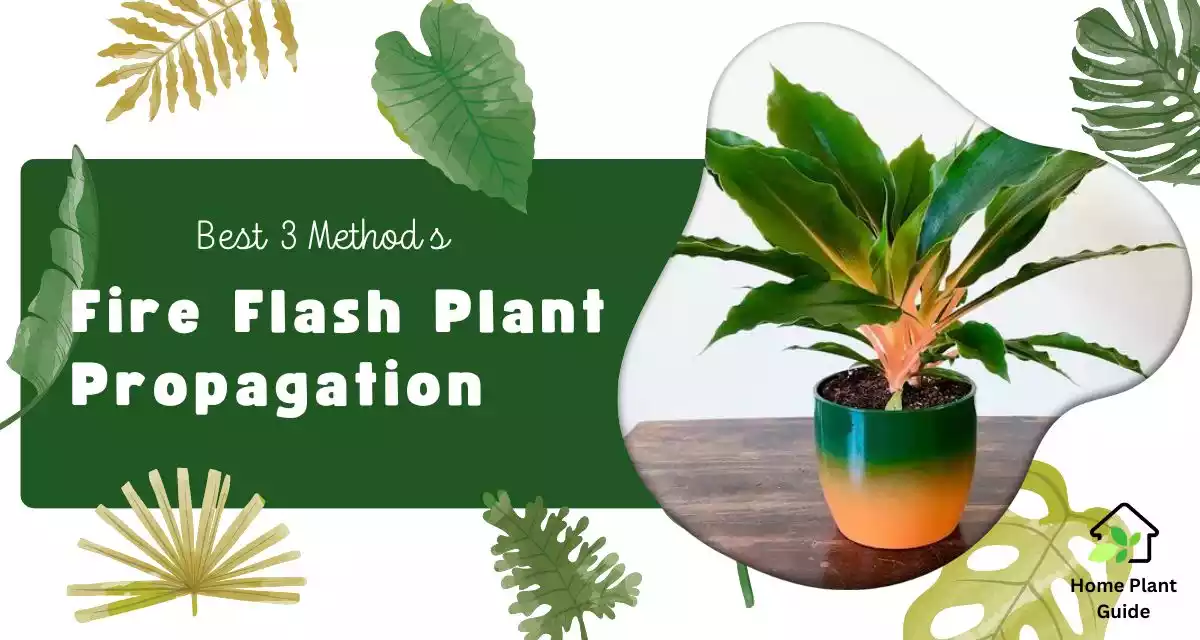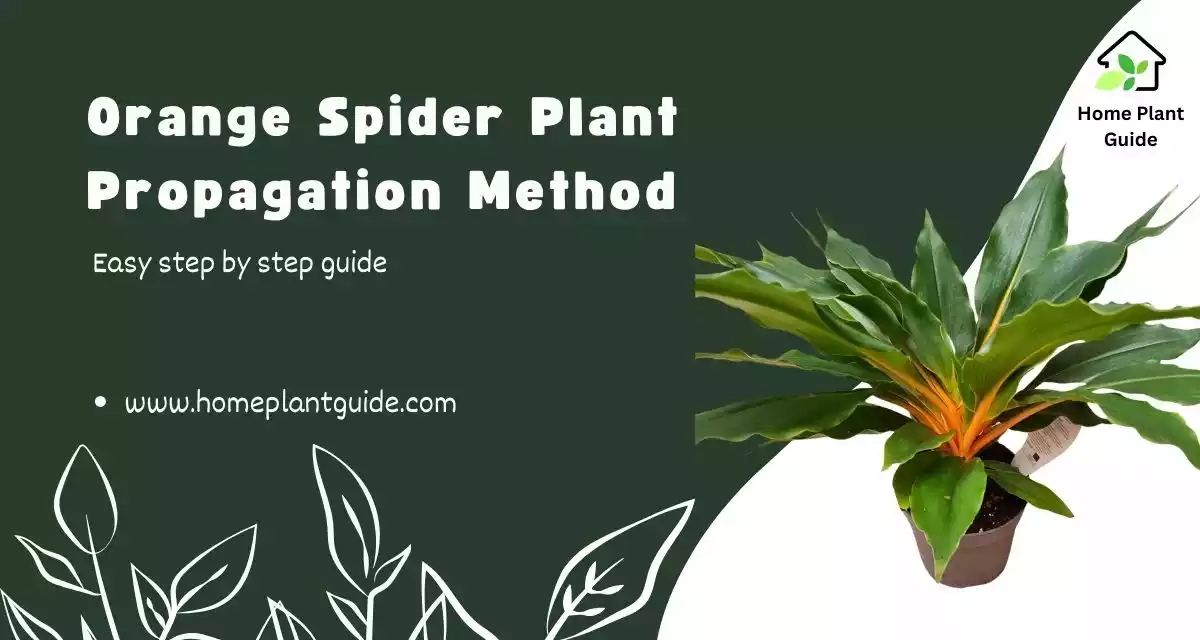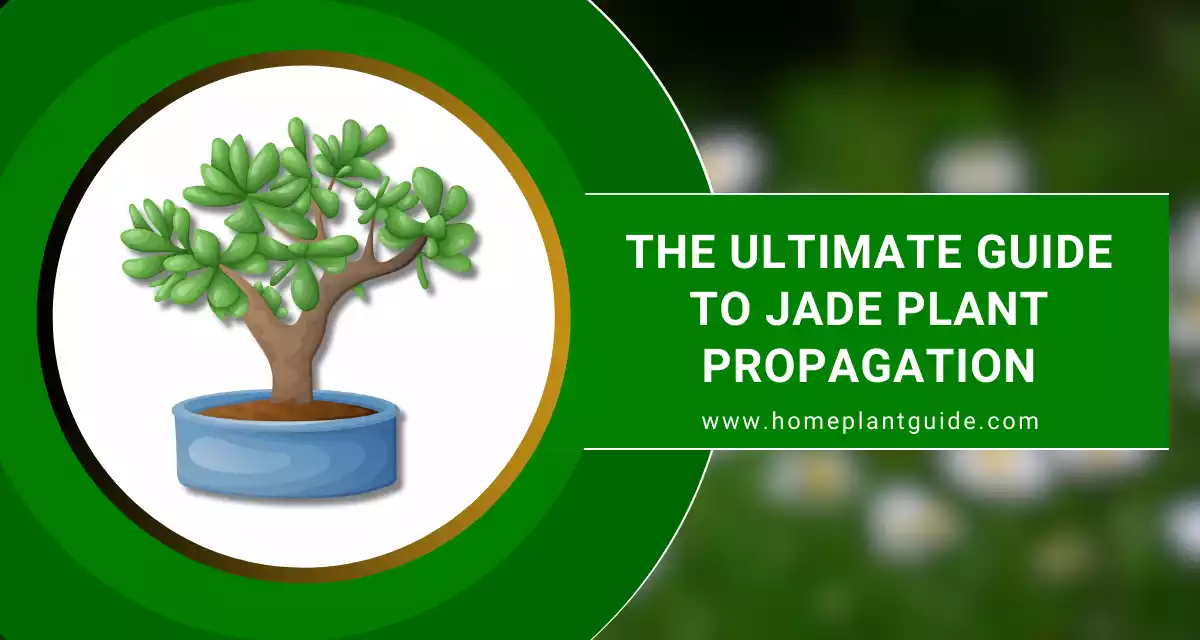The jade plant is one of the most popular and low-maintenance houseplants. Its dense green leaves and waxy coating give it a unique appearance. It adds beauty to any home.
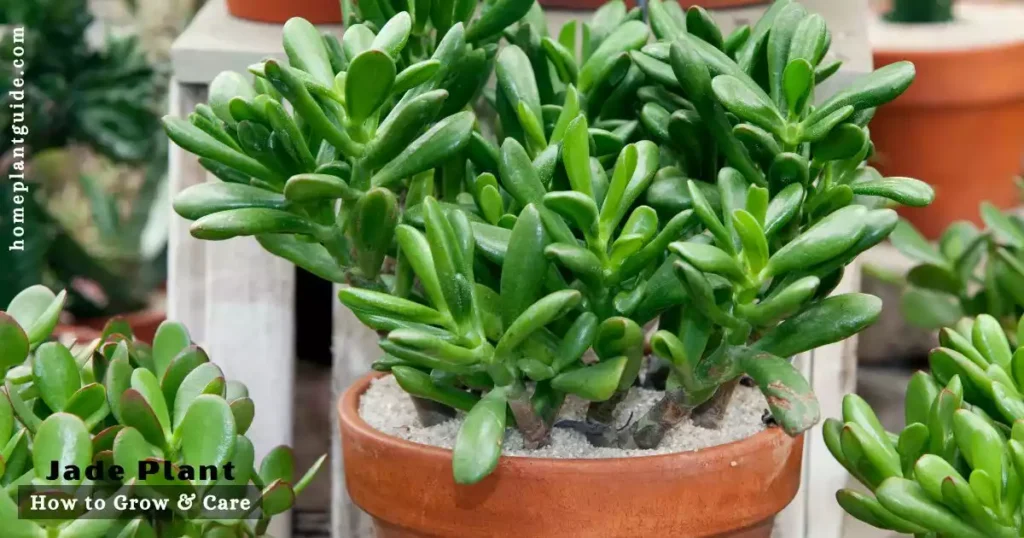
The scientific name for the jade plant is Crassula ovata. Let’s explore some key facts about growing and caring for this succulent plant.
In This Article
Specification of Jade Plant
Here is some important information about this plant.
| General Name | Jade Plant |
| Scientific Name | Crassula ovata |
| Plant Family | Crassulaceae |
| Type of Plant | Succulent, perennial |
| Mature Size | 3–6 ft. tall, 2–3 ft. wide |
| Flower color | White |
| Sun Exposure | Full sun |
| Type of Soil | Well-drained |
| Soil pH Value | Neutral, acidic |
| Native Area | Africa |
| Hardiness Zones | 11–12 (USDA) |
| Toxicity | Toxic to both cats and dogs |
| Bloom Time | Spring |
Types of Jade Plant
Jade plants are known for their resilience and ornamental value. It boasts several intriguing varieties.
From the classic jade, with its thick, oval-shaped leaves, to the more unique cultivars like Crassula argentea ‘Gollum’ or ‘Hobbit,’ Each type showcases distinct leaf shapes and growth patterns.
There are a few different varieties of jade plants:
Common jade
This is the most common type. It has thick green leaves that may develop red tips in sunny areas.
Gollum jade
It is a compact variety with oddly shaped, sculpted pale green leaves with subtle red edges.
Hottentot jade
Taller than common jade with oblong leaves that are grey-green with red edges.
Lime jade
It is similar to common jade, the leaves are bright lime green. Often more petite in size.
Spider jade
The leaves are long, slender, and pendant, giving the plant a spidery appearance.
Choosing a suitable variety depends on available light and the desired aesthetic. Common jade tolerates most conditions.
Jade Plant Propagation Techniques
Jade plants are easily propagated from cuttings or leaves. New growth will form rooted plantlets over time. To propagate:
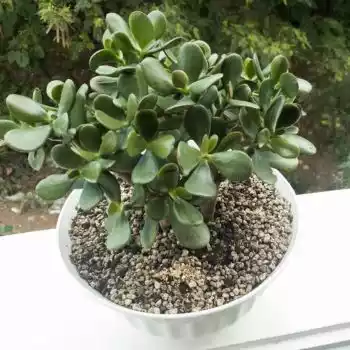
- Remove the lowest leaves with a 4-6 inch stem or leaf cutting.
- Allow cut end to scab over before potting in dry soil.
- Keep the soil barely moist in bright filtered light.
- Roots will form in 4-8 weeks. When created, it is transplanted into its pot.
Propagating makes jade plant care easy by giving away pieces of existing plants to friends. Clippings can also be used to fill out plant sizes over time.
Jade Plant Care
Caring for a jade plant involves simple yet essential practices to ensure vitality. It is known for its hardiness.
This succulent thrives with ample sunlight and well-draining soil. Proper watering is crucial. It allows the soil to dry between watering sessions to prevent root rot. Regular pruning helps maintain its compact shape.
Jade plants can flourish in minimal maintenance, occasional fertilization, and protection from extreme temperatures. Jade graces indoor spaces with their resilient and beautiful foliage.
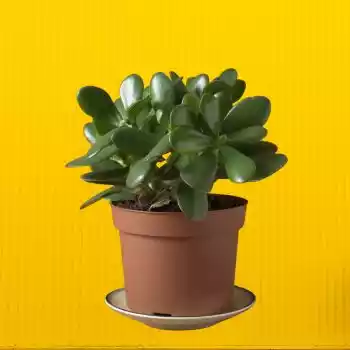
The jade plant is very tolerant and forgiving. Here’s ideal care:
Water
Pour water sparingly. It allows the soil to dry between waterings. Overwatering will cause leaves to rot.
Light
Provide robust and direct sunlight. Filtered or bright indirect light works, too. Avoid drafts and low-light areas.
Soil
Well-draining soil is vital. Cactus/succulent soil mixes work well.
Fertilizer
Feed weakly diluted liquid fertilizer every 2-3 months from spring to fall.
Temperature
Jade tolerates cool temperatures. Avoid below 50°F.
Repotting
Once roots fill the pot. Use a pool one size larger with fresh soil.
Following these guidelines will keep jade plants growing happily for many years. Overwatering causes most issues.
Read More Healthy Plantation:
Jade Plant Benefits
Jade plants offer more than just aesthetic charm. They boast various benefits. Beyond their ornamental appeal, these succulents are renowned for purifying indoor air and removing toxins.
Their resilience and low maintenance make them ideal for novice gardeners. According to some beliefs, jade plants symbolize prosperity and good luck.
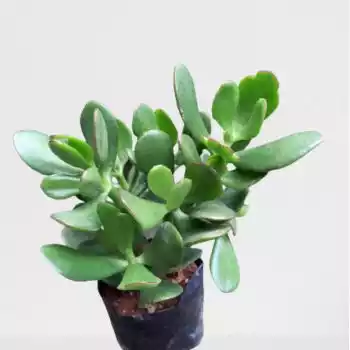
It makes them popular in Feng Shui practices. Due to their air-purifying qualities and cultural significance, jade plants serve as decorative elements. It is a well-being agent in indoor environments.
Besides their decorative appeal, jade plants offer additional benefits:
Air purification
NASA clean air studies show jade removes benzene and formaldehyde from indoor air.
Low maintenance
Thrives on very little water. Perfect for anyone with a brown thumb.
Extended living
When cared for properly, Jade plants can live for over 40 years.
Increases calmness
Having live plants, including jade, reduces stress and increases stability.
Hardy
Tolerates imperfect care. Leaves may drop when thirsty but bounce back with water.
The purifying qualities and easy care make jade a great addition near work or living areas for year-round natural benefits indoors.
How to Prune the Jade Plant
Occasional pruning and shaping of jade plants keep plants appealing and encourage healthy new growth. To prune:
- Use clean, sharp pruning shears or scissors.
- Prune individual leaves or stems as desired for shaping.
- Cut just above a set of leaves or nodes.
- Allow pruned areas to scab over before being exposed to sun or water.
- Remove any leaves or stems that look diseased or damaged by pests.
Prune off 15-30% of leaves or stems to avoid shocking. New growth will fill in areas quickly in a month or two. Winter is an excellent time to prune before the new growth season.
Is Jade Plant Toxic to Cats?
All parts of the jade plant contain saponins, which can cause issues if ingested by cats in large amounts. Jade plants are considered moderately toxic. Symptoms of poisoning include:
- Vomiting
- Diarrhea
- Loss of appetite
- Depression or lethargy
To keep cats safe:
- Place jade plants out of reach of cats.
- Watch for signs of chewing or nibbling to prevent ingestion.
- Seek veterinary care if concerned about poisoning. Induce vomiting only if advised.
- Consider cat-proof pots elevated on stands if jade plants cannot be moved.
Jade plants can be enjoyed safely with proper precautions. Monitoring is still recommended.
Conclusion
The jade plant makes a beautiful indoor plant that is decorative and purifying. Its low-maintenance nature and ability to withstand imperfect care, jade is an excellent option for anyone.
Following best practices around sunlight, watering, fertilizing, and pruning ensures long, healthy plant life. Though mildly toxic, simple precautions also allow safe keeping with pets.
The jade plant is worthwhile for its appeal and user-friendly qualities.
FAQ:
Q: How often do you water the jade plant?
Water jade plant when the top inch of soil feels dry. Typically, every 2-3 weeks.
Q: Where to place the jade plant in the home?
Place a jade plant near a sunny window or in a spot with indirect sunlight for optimal growth.
Q: How often do you water a jade plant?
Add water to a jade plant sparingly. It allows the soil to dry out between watering sessions.
Q: How to trim a jade plant?
Prune jade plants by cutting back leggy stems or damaged leaves using clean, sharp shears to encourage bushier growth.
Read More Easy Indoor Plantation:
